I’m not going to call it a death knell. I’m not going to say the sky is falling. I’m not going to call it the hammer that shatters the format. But I’m also not going to shy away from it and what it indicates.
If you don’t know what I’m talking about, Star City Games made some very large waves Monday afternoon when it announced changes to its Organized Play system. Not only has the Open Series been renamed the “SCG Tour”—a weak imitation of the Pro Tour for sure, but still a positive development overall for Magic — and announce changes to some prizes and events, but it absolutely gutted its schedule of Legacy events.
To be sure, there’s a lot to digest from the full announcement, and I highly recommend reading it in full. Before I get into today’s full topic, I’ll touch on one thing I’m not concerned about: the slightly reduced number of events. SCG follows Wizards of the Coast in this regard, and while it does likely mean we haven’t had the explosive growth in the playerbase we had during the five previous years, tournament Magic is still incredibly healthy. SCG expanded its offerings at the lower levels, and the truth is that no matter how many people play Magic, the ecosystem can still only support so many events. With SCG and Wizards both lumping so many onto the schedule, it was bound to hit a wall sooner or later. Prize support is still strong across the board—heck, Wizards increased the prize for winning a GP to 10 grand—so this doesn’t throw up any flags for me.
But what does hit a few is the dearth of Legacy events on the first part of the schedule. I’ve had a few conversations on Twitter and elsewhere about what exactly this means, and there are a ton of ways to interpret it, but all readings try to answer one basic question:
Is Legacy Dying?
I’m approaching this from a neutral perspective, and I want to make that clear before I dive in. There are a ton of heated opinions on both sides of the aisle here, and truthfully, no one can say for sure what the future holds. So sitting here and just throwing my opinion out at you like it means anything more than the next players’ simply because I have a platform would be, frankly, arrogant of me. But what I can do is present the evidence we have, and allow all of us to draw our own conclusions.
With that said, let’s dig in.
Point: Star City Games has Functionally Dropped Legacy Support
For years, Star City’s Open series was the heart and soul of Legacy. Every Saturday would be a boring Standard format, but on Sunday we’d all have fun watching or playing Magic’s most exciting and diverse format. Survival-Vengevine broke out and broke the metagame, though it was ultimately a blue-black Merfolk deck that won the Grand Prix where Survival emerged.
This was of huge interest to the community at-large, and Survival of the Fittest began to inexorably take over the format. I played a lot of Legacy during this time, and when Survival was ultimately banned, I split the finals of an Open with Merfolk, kicking off what became the second-best romantic relationship of my life. I say this not because it’s hugely relevant to SCG’s actions, but to show that I’m not some shadowy finance guy who doesn’t know anything about the community; instead, I was as keyed in then as I am now, doing regular coverage.
So Legacy was huge then, and we saw rapid growth on a lot of cards in the format, or cards that might break out. So much so, in fact, that growing concern over the Reserved List became a huge, contentious issue again. Ultimately, this played into the creation of Modern, which both served as a replacement for the lagging Extended format and gave Wizards an eternal format not constrained by cards that wouldn’t be reprinted.
At first, SCG ignored the fledgling format, and even Modern 1Ks on Sunday failed to generate huge interest. I recall a conversation I had with a senior member of SCG around 2012 where he told me very simply how the company felt about Modern:
“You can see how we feel about it based on the schedule.”
At the time, that meant the company was fully committed to Legacy, which continued to be heavily supported. Today, we have just one Legacy event on the schedule for the first four months of the 2016 season.
Counterpoint: This is a Small Sample, Not a Mission Statement
It may seem from this that SCG is just off of the Legacy train. But let’s not forget that the company has always led the way when it comes to Legacy support, and it wasn’t that long ago that Grand Prix New Jersey completely ran the Legacy hype train off the rails—people were talking of taking freaking Standard decks to the event just to be there and get the playmat and deckbox and signed Brainstorm paraphernalia. Excitement ran wild, and the event ended up drawing more than 4,000 players, an incredible number for any event.
That’s hardly the sign of a dying format. Sure, SCG has pulled support of Legacy in their Open Series early in the year, but it doesn’t have a Legacy Grand Prix on the schedule this year. Why would a company support a format that ultimately ends up promoting someone else’s GP instead of its own? In this context, it makes sense why SCG would instead throw its support to other formats.
Point: Modern has Eclipsed Legacy as the Eternal Format of Choice
If there’s ever a contentious point to make, it’s this. But at the same time, this seems to certainly have evidence to support it. It’s evident in SCG’s scheduled events, in WOTC’s schedule events—including the Pro Tour—and Modern certainly generates more headlines. These days, it’s very rare when new cards come out that we talk about their Legacy playability; instead we’re much more interested as a community in how they’ll do in Modern. Because of this, there’s always something new to consider with the format, and every few months we see something new break out.
This speaks to how Modern—with its carefully curated banned list—is viewed by the majority as a more exciting format. I see a ton of players come into my store hoping to gets certain cards to break into Modern, but almost never does someone come looking for Legacy cards. Nearly every LGS around here has weekly Modern events, but none of them carry Legacy events. While this isn’t the same throughout the country or world—at least in the U.S., the coasts have more Legacy players than the Midwest or South—it’s certainly part of a larger trend.
And while we talked about how Grand Prix New Jersey hit big numbers, it failed to surpass Grand Prix Richmond, which is still the third-largest Grand Prix to date, with only the two Modern Masters Vegas events passing it. In this world, if you’re not growing, you’re dying, and these things seem to indicate that Modern is growing and Legacy is not. Legacy is not irrelevant because of these things, but Legacy has become to Modern what Vintage is to Legacy—existent with a passionate community but ultimately less relevant.
Counterpoint: Modern and Legacy Can Coexist Peacefully, and It Doesn’t Have to Be One or the Other
Everything said about Legacy and Modern—that one is less prevalent than the other on the schedule, one generates more day-to-day social media interest and headlines—can be said about Modern compared to Standard, as well. After all, no format is more played than Standard, and it dominates the Pro Tour schedule, not to mention being the LGS format of choice by and large. If we were to sample a given time period’s top headlines, it’s highly likely Standard would dominate Modern in those regards. But I don’t think anyone would say Modern is dying because these facts hold true, so why is it used to say that Legacy is dying?
Furthermore, fewer events doesn’t mean less interest—it simply means more pointed interest. The fact that Legacy doesn’t change as often as Modern is seen by many as a benefit since the deck you build today is less likely to get banned or hated out when you do get to play it. Legacy’s metagame doesn’t change as much as Modern’s simply because there are more cards legal, and this fact will automatically generate fewer day-to-day headlines. But that doesn’t mean people care about the format less, it just means there’s no need to obsess over it every day. And because the schedule isn’t saturated with events, the ones that do happen will have more success thanks to the condensed air time. No one gets tired of Legacy when you don’t have it shoved down your throats every week; can the same be said of Modern?
There’s more to a format than number of events and Reddit upvotes. Legacy has a thriving community and is in no way falling off.
Point: Legacy Prices on Staples Flatlined or Declined in 2015
Allow me a few graphs to illustrate this point.
That’s a lot of downward movement, and it’s certainly atypical from what we’ve seen in the past, where Legacy seemed to be a growing format rather than a stagnating or declining one. I spend more time tracking price movements of cards than 99.9 percent of people who play this game, and I can tell you that it’s extremely rare that I see Legacy cards make it onto the weekly or monthly interests page.
When I started playing this game seven years ago, there were always Legacy movements happening. A new deck would break out at an event, and cards would shoot up. Even if there wasn’t a new event, the substantial growth of players getting into the format would increase prices steadily enough to frequently make new cards worth watching. These days, that’s left solely to the purview and Standard and Modern.
Modern prices have, as a whole, increased despite reprint pressure in Modern Masters 2015. The reason is that more people want to play the format and are willing to purchase the cards, which moves the price up, regardless of card prices beforehand. If the same were true in Legacy, we’d see duals rising. Instead, they’ve fallen flat, and despite 2015 being another banner year for Magic, some of its most iconic cards couldn’t keep up with the growth. If Legacy were truly still growing, why wouldn’t this be the case? Even the most stapleish of all staples—Force of Will and Wasteland—experienced a flat or slightly negative 2015.
Even if you want to suggest that the movement in duals is tied to playability, it’s hard to make the same argument about these two cards, which are perpetual must-haves of the format. If Legacy were truly growing rather than fading, these graphs would look far different.
Counterpoint: Sure, 2015 Was Weak, but These Cards Are All Still Higher than They Were Two Years Ago
For a game that’s been around for nearly 25 years like Magic, taking one year of price movement to try and illustrate a trend for an eternal format is silly. No one claims the stock market is dying because it experiences a bad year or two. Trying to draw blanket conclusions from Legacy based on 2015 alone is a wasted exercise.
And if the format were truly fading, why are prices still far higher than they were two years ago, in many cases? The run-up was so much, so fast it’s natural to expect some settling, and these will rebound in the future.
Not to mention, there are a ton of factors that explain why prices didn’t move besides claiming the format is dying. It’s no secret Star City Games leads the market in these cards, and the run-up to Grand Prix New Jersey was a result of great advertising and market influence by SCG. Given that the company doesn’t have a GP this year to draw people to, why would it need to buy staples so aggressively? When the market leader has a Grand Prix-level reason to support these staples again, the movement will pick right back up.
Point: The Reserved List Exists, so Legacy Will Never Be Able to Be Played by Anything More than the Most Hardcore of Players
It’s a simple concept. There are exactly X number of dual lands on the market, and that number decreases every year as copies are lost or destroyed. Furthermore, because there will never be reprints of these cards, there is a hard cap to the number of players who can play top-tier Legacy decks at any given time. How can a format be anything but dying when the copies of cards needed to play literally die off more and more every year?
Even if we don’t reach the “hard cap” in Legacy, there’s a reason Reserved List staples have trended up over the last few years: only the most dedicated and well-off financially will be able to play. More and more players are priced out of the format every year, and they give up and sell their finite copies of dual lands, which go to players buying in who are willing and able to pay a premium for the chance to play Legacy. It’s very much a luxury among luxuries; after all, we see NBA teams get sold for more and more every time one comes for sale, but I still count only 30 teams in the league. It’s hard to call that “growing,” and as we established earlier, if you’re not growing, you’re dying.
Counterpoint: These Factors Have Been True for Years, and Haven’t Stopped Legacy’s Growth
Continuing the NBA example, it’s also hard to call that “dying,” either. If people are willing to pay more and more to buy in, what is that if not a sign of the format’s popularity? And given that popularity, how can you say that Legacy is dying?
Also, I haven’t seen TCGplayer sell out of dual lands recently. As of this writing, there are more than 100 copies of even the most popular blue duals available. If this “hard cap” was so dangerous, why haven’t we seen the market sold out yet? And for every dual that becomes “lost,” another becomes found. People are still turning up collections from the ’90s that are loaded with duals, and the number that are actually destroyed is so minuscule it doesn’t affect the overall market.
Attendance at Legacy events has continued to be strong, and players find ways to play even if it’s not with the most expensive duals. And when Standard can cost over $700, how is using the price of Legacy staples — that don’t rotate — a point against the format?
Conclusion
I have to say, I feel like both sides of these arguments have merits, and the truth likely lies somewhere in between. For me, the problem lies in the question itself: so many people are worried about proclaiming the “death” of Legacy because it’s a flashy headline, but the truth is that Legacy doesn’t have to be in the spotlight every single weekend to be relevant.
But no matter how I evaluate each individual point, it all comes back to one simple question for me: is Legacy more relevant today than it was five years ago? Will it be more relevant five years from today than it is now? I think it’s hard to argue that it will be. Wizards of the Coast has proven that it’s Modern that will be getting the support, both in reprints and in events, and over time, the format will continue to eclipse Legacy.
Yes, it will be fun whenever we get a Legacy event or there’s one on Twitch, just like it’s fun when Vintage occupies that niche now. There are way more cards out there for Legacy, so it will never truly be as rare or expensive as Vintage, but it will continue to be pushed into that corner, where it’s a luxury hobby within a luxury hobby. I don’t think this constitutes dying or even “fading,” but it’s hard to see Legacy being more relevant five or ten years from now than it was five or ten years ago.
That will mean something different to everyone, and the most important thing to consider moving forward is how you plan to interact with the format. If you want to be a hardcore Legacy player, I suggest looking toward local and regional events—many of which are already springing up to fill the void SCG left—and finding ways outside of SCG to support that hobby. If you’re a casual fan who enjoys watching the format, this will make those events we do get all the more exciting. If you’re someone who wants to get into competitive Legacy, this may make the transition a little bit easier in the coming years.
For all of us, what’s far more important than worrying about whether or not Legacy is “dying” is worrying about how you want to go about enjoying it. Because it is a fun ride, and that’s never fading away.
Thanks for reading,
Corbin Hosler
@Chosler88 on Twitter/Twitch/YouTube
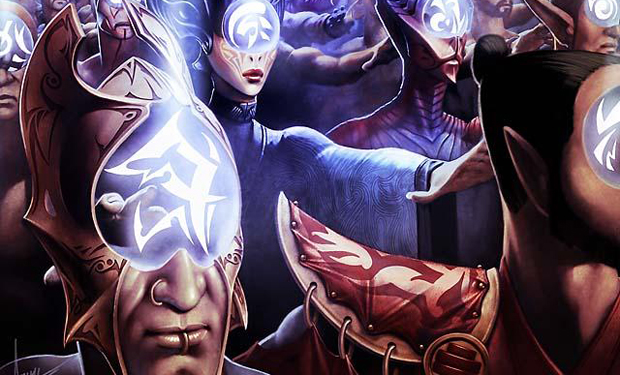

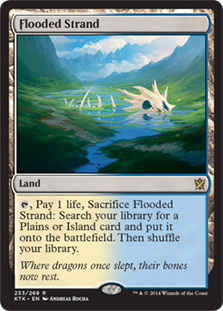
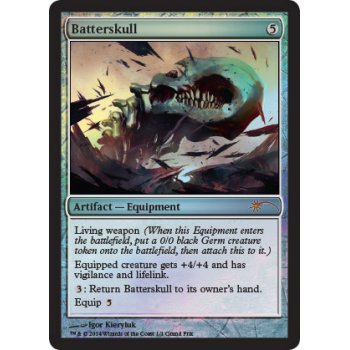
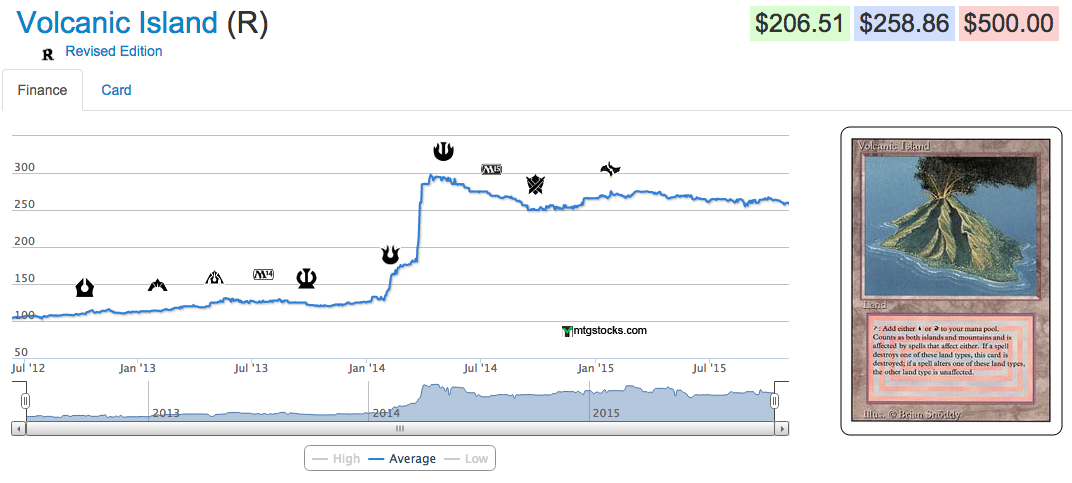
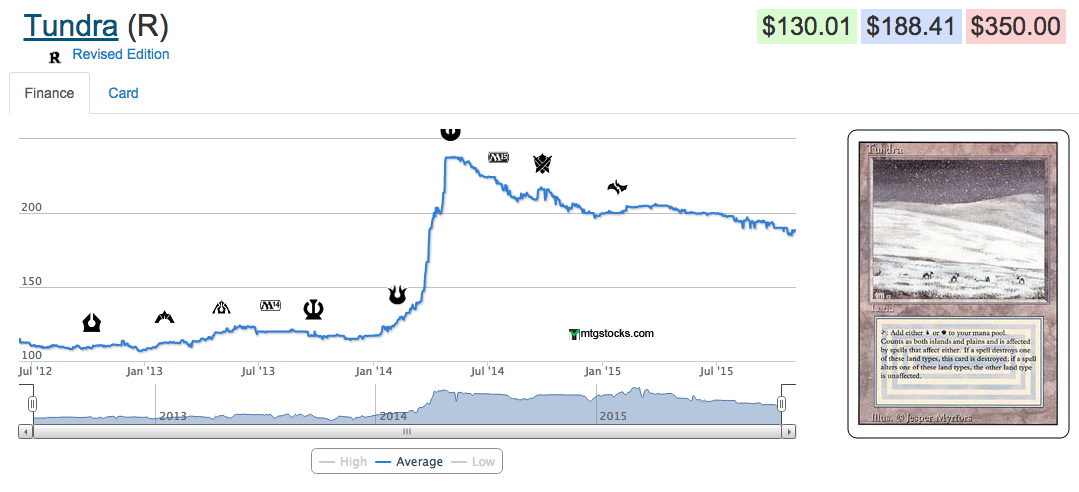
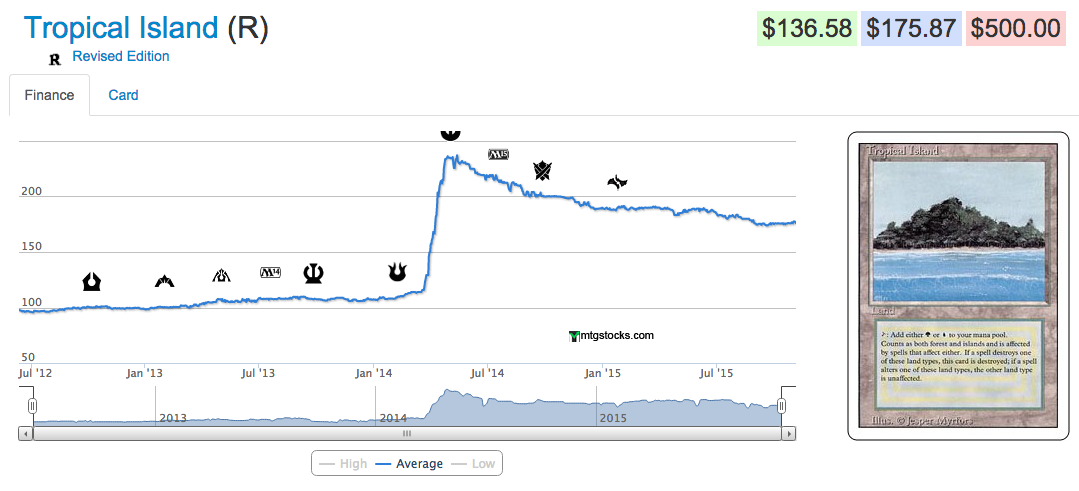
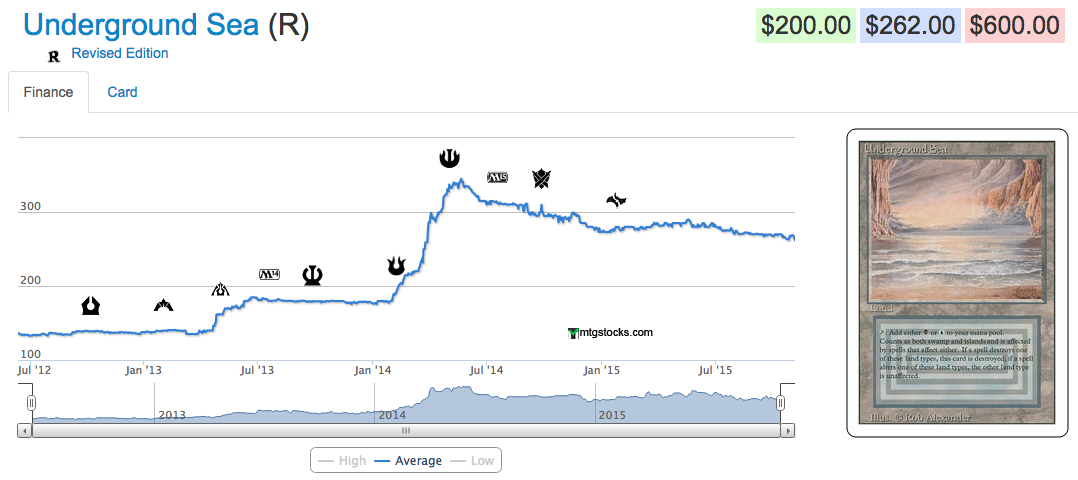
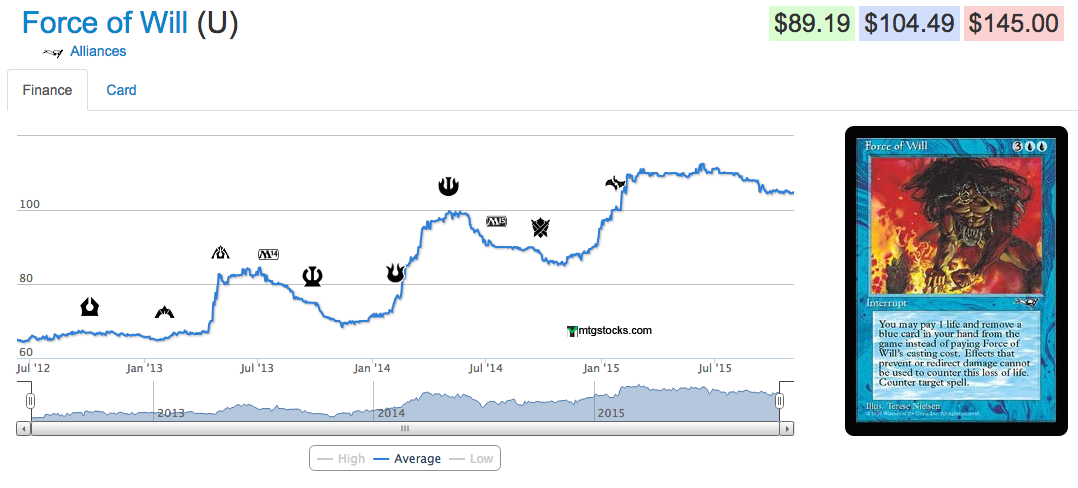
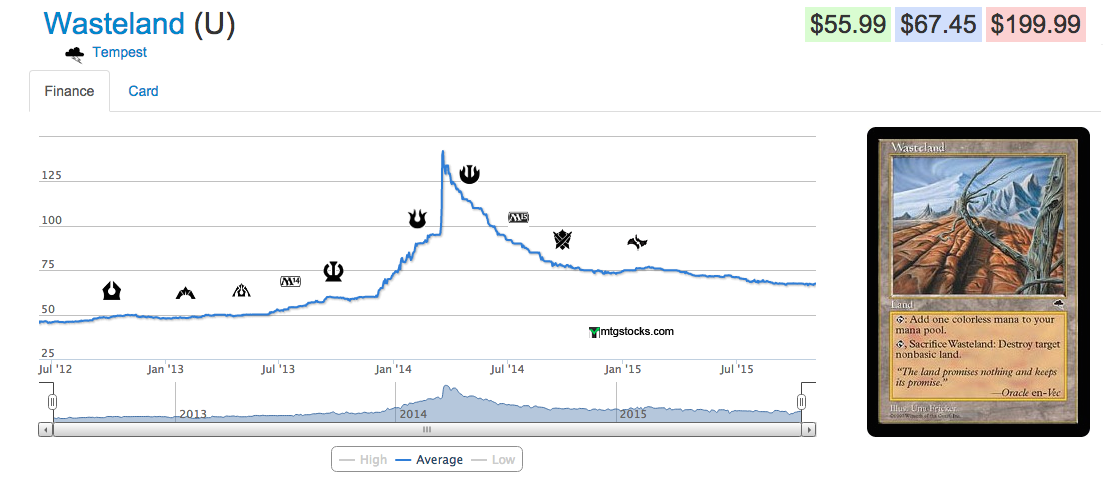
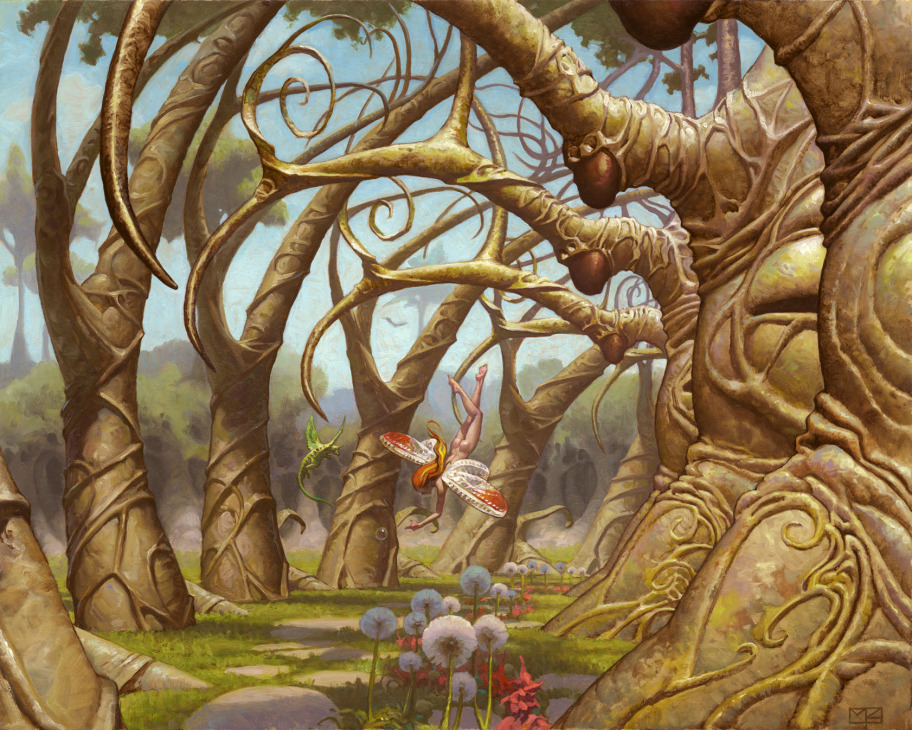
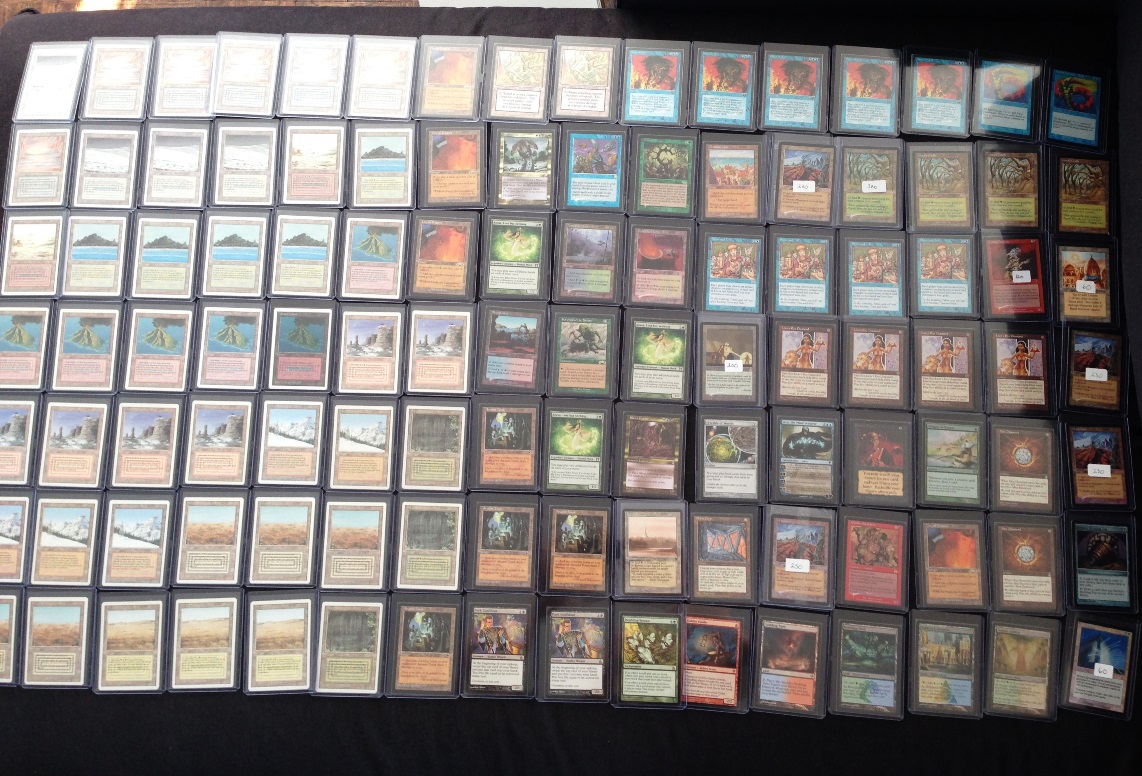
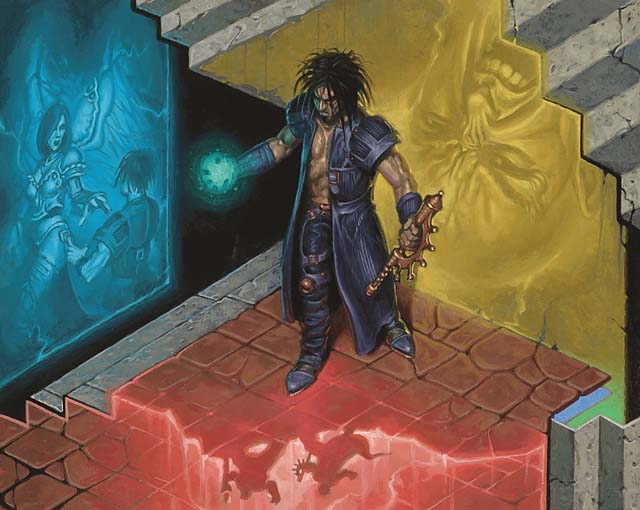
Any thoughts that SCG knows they’re the only game in town as far as Legacy is concerned? Maybe they’re decreasing demand to get staples cheap through their buylist, then increasing opportunity for Legacy to boost prices and sales again?
this was exactly what i thought. reintroduce legacy into the scg tour in a couple years after scooping up a bunch of staples that have gone down in price ..
I followed this discussion since modern exists. It’s a very interesting discussion.
I remember that a few years ago, when the format started, the lack of support by SCG was the main reason why the format would not succeed. It needed some time to grow, and it did.
But I always arguemented that WOTC is going to do all it can to make the format real. And they did.
In the end, SCG needs to adapt of course. And they finally did. They do it gradually, that’s clear. My interpretation was that SCG needs to sell out all the legacy stuff they bought up (the one causing the price boom).
The gradual change to modern is good to prevent a bubble burst of the legacy price.
I do think the prices will go down, eventually, but not a complete crash. In the end, legacy will always exist, but it’s not really suited for new players. It’s for the magic veterans. And every year it’s getting harder, so for me it’s already dead. I can’t even convince the modern players locally to play modern, but it works the other way (legacy players play modern).
It’ll always be around for sure, but will the prices stick? I think so. Honestly, the power level of the cards there are completely different than the power level of cards in the Modern era, or even the new evolving Standard.
Could you imagine how much a Butcher of the Horde would sell for in June 1994, if it were a real card then? More than Juzam Djinn did almost for sure, despite being 3 colors.
Point here is, I can see vintage/legacy turning into a “block constructed” similar to 93/94, with other variants, like Alpha through the Dark (including reprints), maybe a “legacy extended” that includes only 3rd or 4th edition through the end of the old border. And a “legacy vintage” or something that includes anything with the old border.
Cards of that era have similar power levels, and belong with eachother. By restricting the sets, you can prevent some of the horrible things people can do in Legacy that just explodes perfectly good games.
Great article. I’m surprised you didn’t bring up one other point that is probably driving the focus of SCG away from Legacy and towards Modern: Profit! I’d be willing to bet that SCG makes far more money selling Modern cards than they do Legacy. So why not push the products that bring them the most profit? Sure, they may sell a Volcanic Island for $300, but how many do they really sell in a week and what is their profit margin? Are they selling more Steam Vents at a larger margin and in larger quantities? I’d be willing to bet “Yes”. At the end of the day they are a business and money talks.
Yes, very good point. Legacy cards are low volume movers.
How long before sets start to rotate out of modern? maybe that will help legacy grow. 8th edition was release in 2003 and is over 12 years old, how much longer can that really be considered modern?
Modern is the name of the format, but not necessarily the spirit. It’s defined as all standard-legal sets printed since the “modern” frame debuted in 8th/Mirrodin. There is no intention for any entire set to rotate out of legality.
That’s irrelevant. If cards from “old” sets in modern become sparse due to their age, they get reprinted. That’s the point of modern.
So if Legacy might go down the path of vintage, what does that mean for prices? As vintage waned in popularity, did the price level for the cards drop? Power has increased in price, but what about “staples” for vintage?
(I’m honestly asking here, because I do not know).
Great article, thanks again.
I think the true “staples” – Force, Wasteland, obviously duals, will hold up okay. But everything else that relies on Legacy being played competitive will start to fall off, or at the least, never grow. Think stuff like Glimpse of Nature – important in a competitive deck but useless elsewhere. I don’t see a bright future for stuff like that.
I played 10 proxy Vintage about 8 years ago, and it was right as the Legacy boom happened. So first, Vintage wasn’t exactly cheap: power was expensive then, and it is now, but that’s because collectors love their power as much as everyone. Workshops was in that camp as well.
If it was a card that wasn’t those handful of old collectible cards, it was relatively cheap (Force, for example, was 30$). You tended to round out your check with really cheap effects and commons no other format cared about – Oath of Druids is a rare old card, but it saw play in only vintage, so was about 6$. Tinker saw play in only vintage, so it was super cheap. When the Legacy boom happened, if the card saw play in Legacy in skyrocketed. In six months the price of duals / wasteland doubled. And that upward pressure kept going up. Meanwhile things that were old and defined archetypes in vintage — barring the alpha-beta-unlimited cards that appeal to collectors — stayed cheap. Look at how cheap skullclamp STILL is. It’s banned in legacy, but that card is a house in Vintage. Is it a house enough to drive the price up at all? Nope.
Good article. As far as events go. WOTC and star city have done well supporting it. The ladder of the two obviously doing a lot less of that now. The issue with legacy is, while I think it is an insanely fun format, the prices to play nearly any legacy deck is far more than the majority of players can afford to, or are willing to lay in order to play. I am not saying that Modern is cheap either, but no one can argue the less expensive choice of the two.
With Modern masters 1 and 2 the prices of many modern cards dropped thanks to those reprint sets being released by wizarfs, and made Modern a much more accessible Format. You can’t do that with legacy. Legacy isn’t dead but nothing is being really done to attract players into the format itself. I won’t argue the making it more cost effective, because that is nearly impossible. While I do live Legacy as a format, and certainly hope it continues to do well. Based on all these factors, in my opinion it is in some turbulence and will fe some struggling.
“…sitting here and just throwing my opinion out at you like it means anything more than the next players’ simply because I have a platform would be, frankly, arrogant of me.”
This is one of the reason why I respect your articles and opinion. Your humble approach and lack of grandiose claims allows the reader to form an opinion, as opposed to you repeating one several times and then claiming it to be true.
Keep up the journalistic approach.
I appreciate the kind words, thank you 🙂
Impressive article. And yeah I remember getting dusted by UB Merfolk. Saito had come prepared to beat Zoo, which was Folk’s biggest weakness at the time, and he turned to cards like Perish and Submerge to shore up that matchup, which were really strong against my Noble Hierarch deck. I chewed through a few other Folk players that weekend, but he had my number twice (once in the swiss once in the T8).
Also, don’t underestimate the power of slapping your face hard before the game begins to focus your power of attention beyond those of your opponent.
Thanks! Merfolk4life 🙂
I don’t fully agree on the point about the reserved list and the agony of legacy because of the limited number of staples. While it is true that the argument is old, and that the legacy community has actually grown in the past years, the argument is still valid.
What you have to take into account is the time frame. Legacy will not fade away in one year, but applying market concepts and you own arguments, the prices go up, people still buy, then there is a sort or relaxation in the prices. This can only mean that the demand has lowered or the supply has increased. However, the supply cannot increase for ever. Eventually there will not be enough copies to sustain a low price, therefore prices will go up again and possibly demand will decreasse arriving to a new plaeau. But the problem is that this dynamics cannot be sustained in the long term because supply will not be able to put more copies there. This will lead to a permanent increase in prices where the player number will not increase, but decrease, without lowering the prices. What eventually will mean that accessing the format will be actually impossible.
The point is, again, the time frame. Will this happen in 4 years? I don’t think so. Will it start to happen in 10? Maybe. But without a solution in time it wil, and with the reserved list locking fresh supply as you mention, this will be the new vintage.
Excellent article, I really appreciate all the depth and hard work you put into it.
I’m personally down on Legacy because of the Cruise and then Dig bannings as I was one of many UR delver players. Why did I and a lot of my friends play UR delver?? Because at the time the only cards worth a lot of money in the deck were Force and Volcanic Island. Now that deck is dead and I’ve jokingly said to people that the deck wasn’t expensive enough and Legacy players wanted it banned cause it destroyed their $4000 decks. So I kinda think Legacy is on a bit of decline anyways cause the format has gone back to being stale. I find it interesting Dig was just banned for a format that Wizards and SCG seem to no longer care much about. Who cares about keeping a format “fair” if no one wants to enter it or play it?
I can truly say if it wasn’t for UR delver’s success I’d have never gotten into Legacy. While technically one Legacy deck might equal the same cost as 4 Standard decks in successive seasons, it’s just SO MUCH at one moment to start a format, probably with a sub-optimal deck, and without the experience to win with the deck. Emotionally it’s hard to enter a format where one game you might play miracles, another high tide, another storm, RUG delver, and then you are finally excited to play against a “fair” shardless BUG deck. So initial cost is a HUGE deterrent.
I do have some comments about yourprice graphs…I believe a lot of the spike centered around GP NJ or other large STREAMED Legacy events. As your graphs showed the lands spiked way to hard and have come back to an equilibrium price, still mostly higher than before the spike so that makes sense. It’s like Snapcaster around the time of the last modern GP, he was $40-60, spiked to near $100, and is back to $60ish. It doesn’t mean Modern or Legacy is dying, the supply and demand is correcting itself. The graph about Wasteland is going to take an upward swing soon…Patrick Sullivan noted during Legacy coverage that RUG delver and Wasteland strategies were on the decline thanks to Treasure Cruise. When Cruise was banned he said it was a more enjoyable format for players when their lands weren’t being destroyed and they were drawing cards. Similar opinion of Dig decks. Now I believe RUG delver and Wasteland decks will make a large resurgence with both draw spells gone. I don’t think Wasteland is going to shoot up to $100 overnight, but it will grow as players are no longer interested in fetching double basic island to cast Digs. I could be wrong, Legacy might be dying, but I’m actually trying to trade for Wastelands as I think they are at an all time low. Also regarding Wasteland, there’s more judge promos out there now and Legacy players do like shiny objects over the regular versions
in any case, Wasteland should not be a problem as long as Wizards still want to support the format. If it becomes too expensive, they only need to reprint it: it is not in the reserved list.
Except that Magic is really nothing more than a form of fiduciary media and a fiduciary medium that continues to just “grow” does die. It’s called inflation.
SCG can not support it all they want. There is a market for tournaments and like this article pointed out Legacy players are players with deep pockets so another party will probably pick up the check.
Let Card Titan run them. Eternal Weekends is par excellence.
What doesn’t grow, dies. And what dies grows the tarmogoyf lol
Should we be selling our revised dual lands?
The conversation I am seeing Legacy players have right now is literally the identical conversation I heard Vintage players have about 10 years ago. They croon about how their format is the best FORMAT EVAR. Some very loud players don’t seem to acknowledge that price is a barrier (Seriously. Price is a barrier. Yes, standard top-end decks are 700$. If you played standard regularly, you might have won some of those cards with store credit. Even so, 700$ *gets you an entire, complete deck*. That’s simply not true with Legacy.). What happened? The format faded. It is a niche’ hobby – and there is, admittedly, pockets of an active vintage scene.
The fact of the matter is that the format is fading. It won’t die out – certainly. The cards will still retain a lot of their value, because collectors love that and price memory is very strong. There might even still be huge events. But GP SeaTac just happened and you had a little over 2,000 people show up. That’s not a trivial result, but a modern event two years ago drew twice that amount. Legacy might be a draw, but you’re not going to get those 5,000 people GPs.